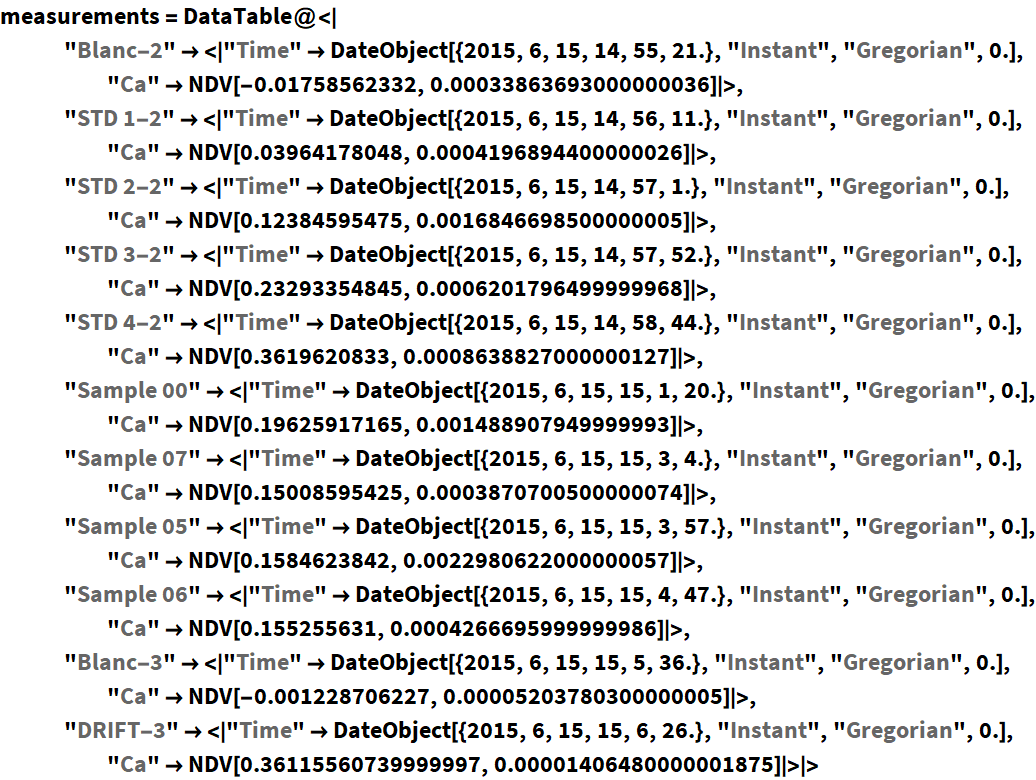DATA ANALYSIS PACKAGE SYMBOL
CalibrateCompositionalData
CalibrateCompositionalData[datatable,standardData,{column1,column2,…}]
calibrates the measurements for the compounds in a set of columns in a DataTable using the standardData.
DetailsDetails
- CalibrateCompositionalData processes raw data of compositional (chemical) analyses using a set of standards of known composition to calculate concentrations of chemical elements, components, isotopes, etc.
- The function requires a column named "Time" containing values that can be processed by AbsoluteTime (e.g. a DateObject, a number, or a date string) for each row in the measurements DataTable.
- Multiple repeat standard measurements can be specified for the set of standards, and each individual measurement is calibrated using the linear interpolations of these standard measurements for the time of each analysis.
- By default, a linear calibration curve of the form y=b*x is used, but a constant basis, i.e. y=a+b*x, and/or a quadratic term, i.e. y=b*x+c*x2, can be used using the options IncludeConstantBasis and IncludeQuadraticTerm.
- Blank measurements can be specified using BlankPattern.
- The following options can be given:
-
IncludeConstantBasis False Specifies whether a constant term should be included if not explicitly given in the list of basis functions. IncludeQuadraticTerm False Specifies whether to include a quadratric term in the calibration curve. BlankPattern Null A string pattern that matches the row keys (IDs) of all blank measurements. DriftStandard Null A string pattern that matches the row keys (IDs) of drift standard measurements.





